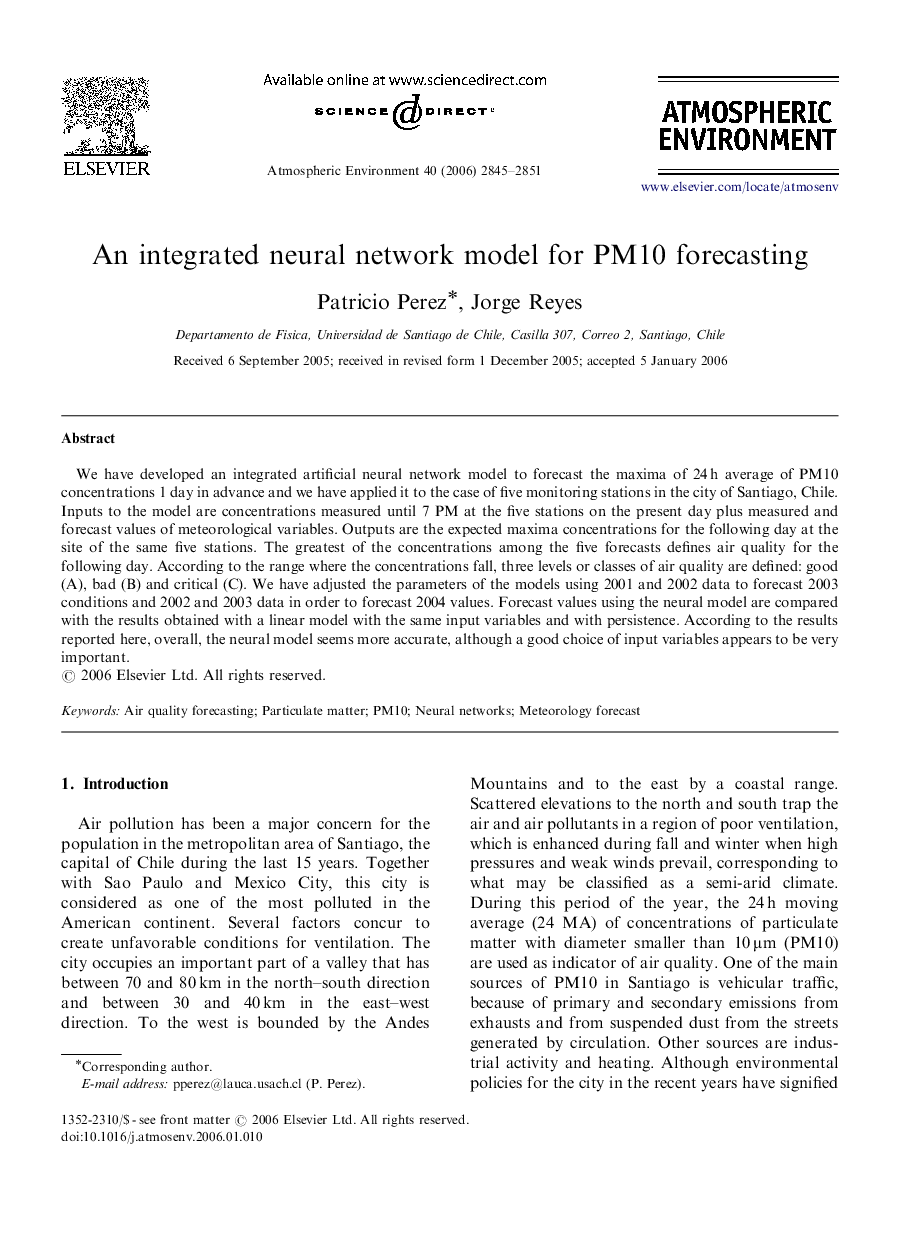| Article ID | Journal | Published Year | Pages | File Type |
|---|---|---|---|---|
| 4444897 | Atmospheric Environment | 2006 | 7 Pages |
We have developed an integrated artificial neural network model to forecast the maxima of 24 h average of PM10 concentrations 1 day in advance and we have applied it to the case of five monitoring stations in the city of Santiago, Chile. Inputs to the model are concentrations measured until 7 PM at the five stations on the present day plus measured and forecast values of meteorological variables. Outputs are the expected maxima concentrations for the following day at the site of the same five stations. The greatest of the concentrations among the five forecasts defines air quality for the following day. According to the range where the concentrations fall, three levels or classes of air quality are defined: good (A), bad (B) and critical (C). We have adjusted the parameters of the models using 2001 and 2002 data to forecast 2003 conditions and 2002 and 2003 data in order to forecast 2004 values. Forecast values using the neural model are compared with the results obtained with a linear model with the same input variables and with persistence. According to the results reported here, overall, the neural model seems more accurate, although a good choice of input variables appears to be very important.
